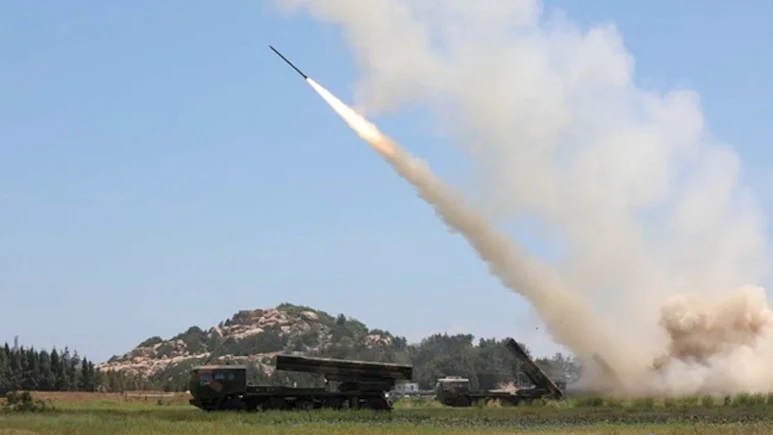The Chinese defense ministry stated that it was a “routine part of our annual training plan” and emphasized that it was not aimed at any specific country or target.

China possesses over 500 operational nuclear warheads in its arsenal.
China successfully launched an intercontinental ballistic missile (ICBM) into the Pacific Ocean on Wednesday, marking the first time the country has publicly acknowledged such a test. The launch, conducted by the People’s Liberation Army Rocket Force at 8:44 a.m. Beijing time (0044 GMT), was part of a routine annual training exercise, according to the Chinese defence ministry. The ministry emphasized that the test was not directed at any specific country or target.
In a statement, the ministry said that the ICBM, carrying a dummy warhead, “fell into expected sea areas” and that countries concerned had been informed in advance. However, specific details about the missile’s trajectory or the exact location in the Pacific where it landed were not disclosed.
The state-run Xinhua News Agency reported that the test successfully assessed the performance of the weapon and the readiness of the troops involved, achieving its intended objectives. The test comes amid China’s ongoing effort to modernize its nuclear forces under the Central Military Commission, headed by President Xi Jinping. The PLA Rocket Force, which oversees both conventional and nuclear missiles, is focused on strengthening China’s nuclear deterrent against threats such as U.S. missile defenses and surveillance advancements.
While China maintains a “no first use” nuclear policy, the pace of its nuclear expansion has sparked international concerns. Analysts argue that China’s rapid nuclear build-up may exceed the needs for maintaining a credible minimum deterrence. The U.S. has frequently criticized China’s lack of transparency regarding its nuclear program, and nuclear talks between the two nations were halted in July after the U.S. approved arms sales to Taiwan.
According to a Pentagon report, China possesses more than 500 operational nuclear warheads, including approximately 350 ICBMs. The Pentagon estimates that by 2030, China will likely have over 1,000 warheads, with many of these weapons kept at higher readiness levels. In comparison, the U.S. and Russia each have over 1,700 operational warheads.
Tensions with Taiwan, which China considers part of its territory, remain high. Taiwan’s defense ministry reported that 23 Chinese military aircraft, including J-16 fighter jets and drones, were detected carrying out long-range missions around the island on Wednesday. Taiwan has also reported “intensive” missile drills by China in recent days, prompting the deployment of its air and naval forces to monitor the situation.
As China continues to expand its military capabilities, international attention is increasingly focused on its strategic intentions and the potential implications for global security.












